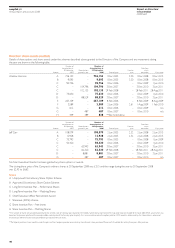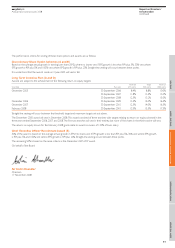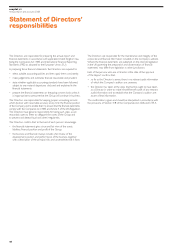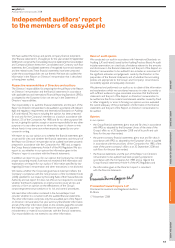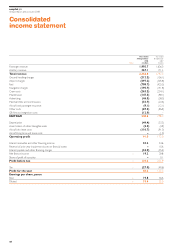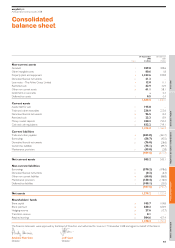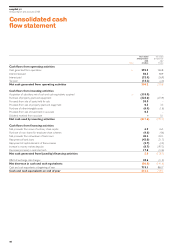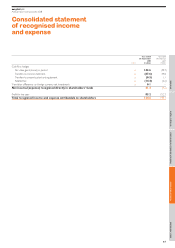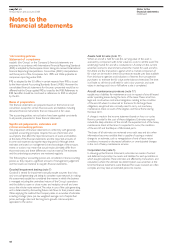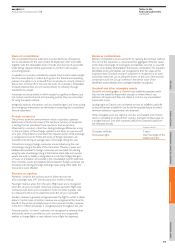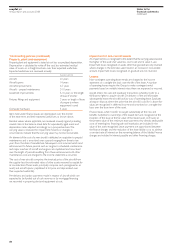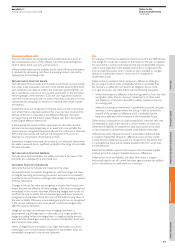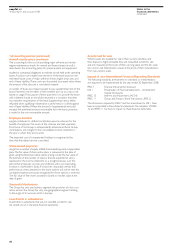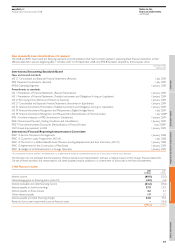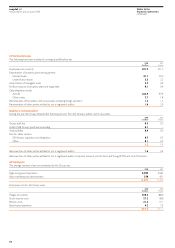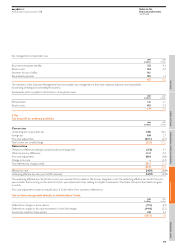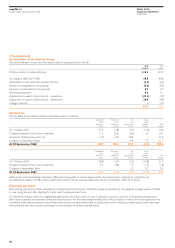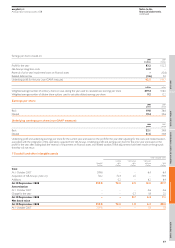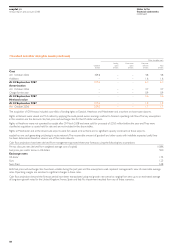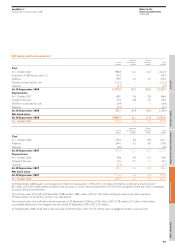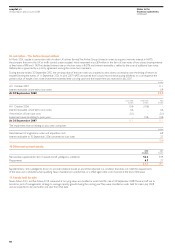EasyJet 2008 Annual Report Download - page 52
Download and view the complete annual report
Please find page 52 of the 2008 EasyJet annual report below. You can navigate through the pages in the report by either clicking on the pages listed below, or by using the keyword search tool below to find specific information within the annual report.
1 Accounting policies (continued)
Property, plant and equipment
Property, plant and equipment is stated at cost less accumulated depreciation.
Depreciation is calculated to write off the cost, less estimated residual
value, of assets, on a straight-line basis over their expected useful lives.
Expected useful lives are reviewed annually.
Expected useful life
Aircraft 23 years
Aircraft spares 14 years
Aircraft improvements 3-7 years
Aircraft – prepaid maintenance 3-10 years
Leasehold improvements 5-10 years or the length
of lease if shorter
Fixtures, fittings and equipment 3 years or length of lease
of property where
equipment is used
Computer hardware 5 years
Items held under finance leases are depreciated over the shorter
of the lease term and their expected useful lives, as shown above.
Residual values, where applicable, are reviewed annually against prevailing
market rates at the balance sheet date for equivalently aged assets and
depreciation rates adjusted accordingly on a prospective basis. The
carrying value is reviewed for impairment if events or changes in
circumstances indicate that the carrying value may not be recoverable.
An element of the cost of a new aircraft is attributed on acquisition to prepaid
maintenance and is amortised over a period ranging from three to ten
years from the date of manufacture. Subsequent costs incurred which lend
enhancement to future periods, such as long-term scheduled maintenance
and major overhaul of aircraft and engines, are capitalised and amortised
over the length of period benefiting from these enhancements. All other
maintenance costs are charged to the income statement as incurred.
The cost of new aircraft comprises the invoiced price of the aircraft from
the supplier less the estimated value of other assets received by easyJet for
nil consideration. These assets principally comprise cash (recognised as an
asset) and aircraft spares (capitalised at list price and depreciated over
their expected useful life).
Pre-delivery and option payments made in respect of aircraft which are
expected to be funded out of cash reserves or by mortgage financing
are recorded in property, plant and equipment at cost.
Impairment of non-current assets
An impairment loss is recognised to the extent that the carrying value exceeds
the higher of the asset’s fair value less cost to sell and its value in use.
Impairment losses recognised on assets other than goodwill are only reversed
where changes in the estimates used result in an increase in recoverable
amount. Impairment losses recognised on goodwill are not reversed.
Leases
Non-contingent operating lease rentals are charged to the income
statement on a straight-line basis over the life of the lease. A number
of operating leases require the Group to make contingent rental
payments based on variable interest rates; these are expensed as incurred.
easyJet enters into sale and leaseback transactions whereby it sells to a
third-party rights to acquire aircraft. On delivery of the aircraft, easyJet
subsequently leases the aircraft back, by way of operating lease. Surpluses
arising on disposal, where the price that the aircraft is sold for is above fair
value, are recognised in deferred income and amortised on a straight-line
basis over the lease term of the asset.
Finance leases, which transfer to easyJet substantially all the risks and
benefits incidental to ownership of the leased item, are recognised at the
inception of the lease at the fair value of the leased asset, or, if lower, at
the present value of the minimum lease payments. Any directly attributable
costs of entering into financing sale and leasebacks are included in the
value of the asset recognised. Lease payments are apportioned between
the finance charges and the reduction of the lease liability so as to achieve
a constant rate of interest on the remaining balance of the liability. Finance
charges are included in interest payable and other financing charges.
easyJet plc
Annual report and accounts 2008
Notes to the
financial statements
continued
50


